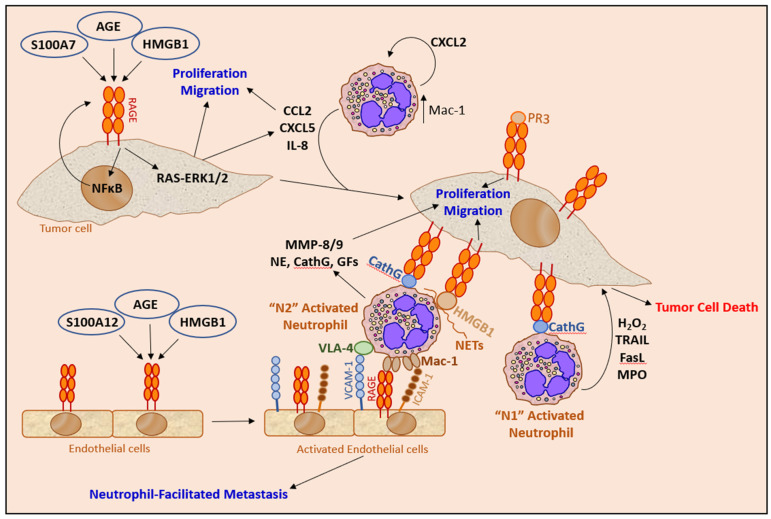Figure 7.
The two faces of the RAGE-Cathepsin G interaction in neutrophil tumor biology. Interaction of RAGE ligands with RAGE on tumor cells leads to proliferation and migration of the tumor cells, as well as the secretion of chemokines that attract and activate neutrophils. The neutrophils can be activated to either anti-tumor “N1” neutrophils or pro-tumor “N2” neutrophils. The interaction of neutrophil-expressed CathG with RAGE on tumor cells facilitates neutrophil-mediated killing of tumor cells. The killing of tumor cells requires simultaneous production of cytotoxic molecules, such as H2O2, TRAIL, FasL and OCl− produced from H2O2 by MPO. However, when the tumor cell-interacting neutrophil is alternatively activated to the “N2” phenotype that does not kill the tumor cells, the interaction of neutrophil-expressed CathG with RAGE on tumor cells strengthens the immunological synapse together with other neutrophil–tumor cell interactions (confer Figure 5). Simultaneous interaction of the neutrophils with endothelial cells facilitates the metastatic seeding of the tumor cell into the distant organ. Endothelial RAGE and ICAM-1 interact with Mac-1 (CD11b/CD18) on neutrophils, and endothelial VCAM-1 interacts with α4β1 (VLA-4) on neutrophils. It is still unknown whether CathG on neutrophils can interact with RAGE on endothelial cells. CathG = Cathepsin G, NE = Neutrophil elastase, and GFs = Growth factors.

